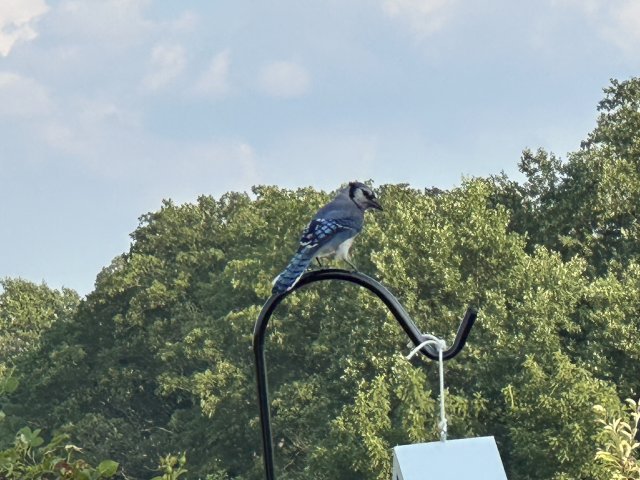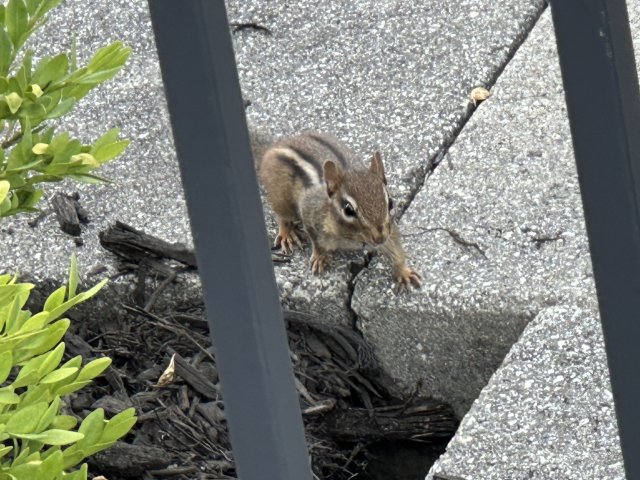I will admit, that was hilarious.Thanks for posting that,RD. Interesting stuff, and it immediately reminded me of a humorous piece published in Field & Stream magazine by the great Ed Zern, who wrote a regular humour column on the back page of that mag for many, many years. It dissolved me into tears of laughter when I first read it and did exactly the same thing now when I re-read it.
I can't seem to link it here, so I just cut'n'pasted it. Trust me, you don't need to be a hunter to laugh at this:
The system is based on a study of crow behavior conducted by research biologists at Phelps University which showed that crows have a relatively high level of intelligence and are actually able to count, but only in multiples of three or less, so that the conventional procedure for fooling crows-by sending several men into a blind, then having all but one of them leave-is not likely to work except with very young birds, if at all. Thus, even if six crow hunters go into a cornstalk blind and only five come out, the crows probably won’t be fooled, as they will have counted off the hunters in trios and will realize that one of the groups is short a man; as a result they will stay the hell away from there until the frustrated gunner gives up and emerges.
My system for successful crow hunting is childishly simple, and consists of the following steps:
1. Build a blind overlooking a cornfield frequented by crows.
2. Assemble a group of twenty-five hunters, all dressed more or less alike and of nearly equal height, build, and facial characteristics. All the hunters should be clean-shaven, but twelve of them should be wearing false mustaches. The group should assemble in a barn or some sort of building not less than 350 yards from the field. (It would be prudent to have a few spare hunters on hand, to substitute in cases of pulled muscles, heart attacks or other contingencies.)
3. All of the hunters should be equipped with 12-gauge shotguns, but it is advisable that these be fairly light in weight, as it is important that all hunters going to and from the blind must travel at a dead run, so that the crows will not have sufficient time for their calculations.
4. As soon as a flock of crows comes into the area, eleven of the hunters are dispatched from the old barn to the blind, running at top speed. The instant they arrive, seven of them turn around and rush back to the barn.
5. When the seven hunters get back to the barn, they are joined by six other hunters and the thirteen of them sprint back to the blind as fast as possible; on arrival there, ten of them immediately turn around and dash back to the barn.
6. Before the ten arrive, eight more hunters are sent from the barn to the blind. When they meet the ten returning from the blind all of them switch hats and false mustaches while milling around in a tight huddle, then break it up and resume running to their respective destinations.
7. As soon as the eight hunters arrive at the blind, five of them turn around and rush back toward the barn; on the way they meet nine hunters running from the barn toward the blind, whereupon the hunters divide themselves into two groups of seven, one of which runs back to the barn while the other rushes to the blind, changes hats and mustaches, leaves two of its members there and dashes back to the barn.
8. Of the twelve hunters now in the blind, nine now rush across the fields to the barn while twelve of the thirteen hunters in the barn charge en masse from the barn to the blind; on arrival they immediately turn and sashay back to the barn taking two of the three hunters still in the blind with them, leaving a single hunter.
9. It is, of course, essential that all this be done at the highest possible speed, so that the crows will fall hopelessly behind in their arithmetic and in the consequent corvine confusion fail to realize that a hunter is concealed in the blind.
10. Eventually the crows will learn to count faster, so that the system must be modified occasionally to keep ahead of them. In addition to having the hunters run faster, it may be necessary to introduce false beards and quick-change toupees as well as false mustaches, and to build a second blind on another side of the field so that the traffic will be triangular instead of simply linear, requiring the crows to start working on trigonometric permutations and geometric progressions in order to cope. In severe cases the hunters may be equipped with numbered jerseys from 1 to 25 but with the number 17 omitted and two number 21s. (This can also be done with roman numerals, when birds are very wary.)
Well, you asked for it, readers, and you got it. Watch this space next month for an equally simple, foolproof system for outwitting that wily old woodchuck in the back pasture, requiring no special equipment other than a stuffed Guernsey cow and a milkmaid’s costume. Remember you saw it here first!
Birding!
- Thread starter jjohnwm
- Start date
You are using an out of date browser. It may not display this or other websites correctly.
You should upgrade or use an alternative browser.
You should upgrade or use an alternative browser.
adding:Common Myna (piha ‘ekelo) (introduced) (seen)
Japanese White Eye (introduced) (seen)
Zebra Dove (introduced) (seen)
House Sparrow (introduced) (seen)
House Finch (introduced) (seen)
Rock Dove (introduced) (seen)
Wild Turkey (introduced) (seen)
Hawaiian Goose (nēnē) (endemic Hawaiian Chain) (seen)
Red-crested Cardinal (introduced) (seen)
‘I’iwi (endemic to Hawaiian Chain) (life bird)
Hawaii ‘Amakihi (endemic to the island of Hawaii) (life bird)
Northern Mockingbird (introduced) (seen)
Gray Francolin (introduced) (life bird)
Great Frigatebird (‘iwa) (native) (seen)
Mallard (introduced) (seen)
Hawaiian Stilt (subspecies of Black-necked Stilt) (Ae’o) (endemic) (life bird)
Wandering Tattler (‘ūlili) (migratory) (life bird)
Black-crowned Night Heron (‘Auku’u) (native) (seen)
Cattle Egret (introduced) (seen)
Saffron Finch (introduced) (life bird)
Java Finch (introduced) (seen)
Spotted Dove (‘Ehakō) (introduced) (seen)
Hawaii must be unique in the ridiculous percentage of birds that are introduced, invasive, etc. and also the number of endemics (extinct or otherwise). Fascinating and depressing at the same time.
It's also pretty amazing that there are actually species that are endemic to only one island in the chain. Their ancestors somehow made it across the Pacific to the island chain...and now can't flutter across the relatively tiny gaps separating individual islands?
My wife and I went south each year for several decades...usually the Caribbean, Mexico or Central America...and always threatened to go to Hawaii some year. Never did it, as it was so much further (from Ontario where we lived) and more expensive; kinda regretting it now.
It's also pretty amazing that there are actually species that are endemic to only one island in the chain. Their ancestors somehow made it across the Pacific to the island chain...and now can't flutter across the relatively tiny gaps separating individual islands?
My wife and I went south each year for several decades...usually the Caribbean, Mexico or Central America...and always threatened to go to Hawaii some year. Never did it, as it was so much further (from Ontario where we lived) and more expensive; kinda regretting it now.
I feel quilty; everybody posts pics in the thread I started, and I have none! Yesterday, I had the chance to get some nice close-ups...but at the time I was absorbed in the action and didn't even think of snapping any shots!
My new nest-boxes were a smash hit with the Tree Swallows, and they have nests in at least 9 of the new boxes, maybe more. That was expected; they are a common bird and not hard to attract to a nest box, but that doesn't detract from the joy of having squadrons of little aerialists twisting and swooping through the air over the yard all day.
But the main goal of those boxes was the Eastern Bluebird; after close-but-no-cigar inspections of my older boxes by Bluebirds for several years...success! Not only did a pair of Bluebirds finally nest, but they did it in one of the new boxes closest to the house, barely off the mowed portion of the lawn. The adults have been carrying bugs and worms to it for a couple weeks, and yesterday while mowing the dandelions I came upon 4 barely-fledged Bluebirds on the ground, right out in the open, maybe 50 feet from that nestbox. Both adults were in attendance and growing more frantic by the moment, so I quickly moved away, and got to watch the adults tending to and feeding the young all day.
The youngsters could only manage short, out-of-control flights and were still on the grass when night fell. I waited until it was dark enough for the adults to have retired, then gently covered the youngsters with an overturned perforated box weight with a couple bricks, to help retain some warmth and mostly to discourage predators. I actually got up a couple times during the night to check on them, and then at about 4:00am today, when it was getting light and birds were beginning to move, I removed the box and was gratified to see the first adult reappear next to them only a few minutes later.
Just now, not even eight hours later, I saw one of the youngsters flapping and flopping clumsily through the air, trying to land on the roof on one of my sheds, but crashlanding on the grass instead. Still, the difference in both feather length and strength of flight, compared to just yesterday, is impressive. I can only find 3 of them now, still hoping that number 4 is alright; fingers crossed.
Probably the wrong thing to post on MFK, but...this has been infinitely more satisfying than having any fish species spawn for me.
My new nest-boxes were a smash hit with the Tree Swallows, and they have nests in at least 9 of the new boxes, maybe more. That was expected; they are a common bird and not hard to attract to a nest box, but that doesn't detract from the joy of having squadrons of little aerialists twisting and swooping through the air over the yard all day.
But the main goal of those boxes was the Eastern Bluebird; after close-but-no-cigar inspections of my older boxes by Bluebirds for several years...success! Not only did a pair of Bluebirds finally nest, but they did it in one of the new boxes closest to the house, barely off the mowed portion of the lawn. The adults have been carrying bugs and worms to it for a couple weeks, and yesterday while mowing the dandelions I came upon 4 barely-fledged Bluebirds on the ground, right out in the open, maybe 50 feet from that nestbox. Both adults were in attendance and growing more frantic by the moment, so I quickly moved away, and got to watch the adults tending to and feeding the young all day.
The youngsters could only manage short, out-of-control flights and were still on the grass when night fell. I waited until it was dark enough for the adults to have retired, then gently covered the youngsters with an overturned perforated box weight with a couple bricks, to help retain some warmth and mostly to discourage predators. I actually got up a couple times during the night to check on them, and then at about 4:00am today, when it was getting light and birds were beginning to move, I removed the box and was gratified to see the first adult reappear next to them only a few minutes later.
Just now, not even eight hours later, I saw one of the youngsters flapping and flopping clumsily through the air, trying to land on the roof on one of my sheds, but crashlanding on the grass instead. Still, the difference in both feather length and strength of flight, compared to just yesterday, is impressive. I can only find 3 of them now, still hoping that number 4 is alright; fingers crossed.
Probably the wrong thing to post on MFK, but...this has been infinitely more satisfying than having any fish species spawn for me.
yeah everything is quite expensive, but the birds are really cool! To put the invasive ratio into perspective, 13 out of the 17 birds i saw today were introduced. Its important to note that I am FAR away, 6 miles on a dirt road after taking an offroad in the middle of nowhere, yet there are still 13 introduced species.Hawaii must be unique in the ridiculous percentage of birds that are introduced, invasive, etc. and also the number of endemics (extinct or otherwise). Fascinating and depressing at the same time.
It's also pretty amazing that there are actually species that are endemic to only one island in the chain. Their ancestors somehow made it across the Pacific to the island chain...and now can't flutter across the relatively tiny gaps separating individual islands?
My wife and I went south each year for several decades...usually the Caribbean, Mexico or Central America...and always threatened to go to Hawaii some year. Never did it, as it was so much further (from Ontario where we lived) and more expensive; kinda regretting it now.
Common Myna (piha ‘ekelo) (introduced) (seen)
Japanese White Eye (introduced) (seen)
Zebra Dove (introduced) (seen)
House Sparrow (introduced) (seen)
House Finch (introduced) (seen)
Rock Dove (introduced) (seen)
Wild Turkey (introduced) (seen)
Hawaiian Goose (nēnē) (endemic Hawaiian Chain) (seen)
Red-crested Cardinal (introduced) (seen)
‘I’iwi (endemic to Hawaiian Chain) (life bird)
Hawaii ‘Amakihi (endemic to the island of Hawaii) (life bird)
Northern Mockingbird (introduced) (seen)
Gray Francolin (introduced) (life bird)
Great Frigatebird (‘iwa) (native) (seen)
Mallard (introduced) (seen)
Hawaiian Stilt (subspecies of Black-necked Stilt) (Ae’o) (endemic) (life bird)
Wandering Tattler (‘ūlili) (migratory) (life bird)
Black-crowned Night Heron (‘Auku’u) (native) (seen)
Cattle Egret (introduced) (seen)
Saffron Finch (introduced) (life bird)
Java Finch (introduced) (seen)
Spotted Dove (‘Ehakō) (introduced) (seen)
Added species from yesterday and today:
California Quail (manu kapalulu) (introduced) (seen)
Kalij Pheasant (introduced) (seen)
Black Francolin (introduced) (seen)
Erckel’s Francolin (introduced) (seen)
Hawaiian Owl (pueo) (endemic to hawaiian chain) (life bird)
Eurasian Skylark (introduced) (life bird)
Japanese Bush Warbler (introduced) (life bird)
Red-billed Leiothrix (introduced) (seen)
Red Avadavat (introduced) (seen)
Palila (endemic to a very small part in Hawaii) (life bird)
Yellow-fronted Canary (introduced) (life bird)
Northern Cardinal (introduced) (seen)
I was aiming to fing the Palila bird because of their rarity and range of 78 square kilometers, and i managed to catch a millisecond glance at one, and i heard probably 3 others. I also saw a Hawaiian Owl which is an endemic subspecies, but its a little weird because I saw it at around 9 in the morning, broad daylight hunting.
I’m looking at the same birds and chipmunk!Bluejay hanging out by the feeder:
View attachment 1544623
And also a Cardinal:
View attachment 1544624
And even a chipmunk:
View attachment 1544625
I’m visiting my Dad outside of Baltimore
where are you seeing them?







